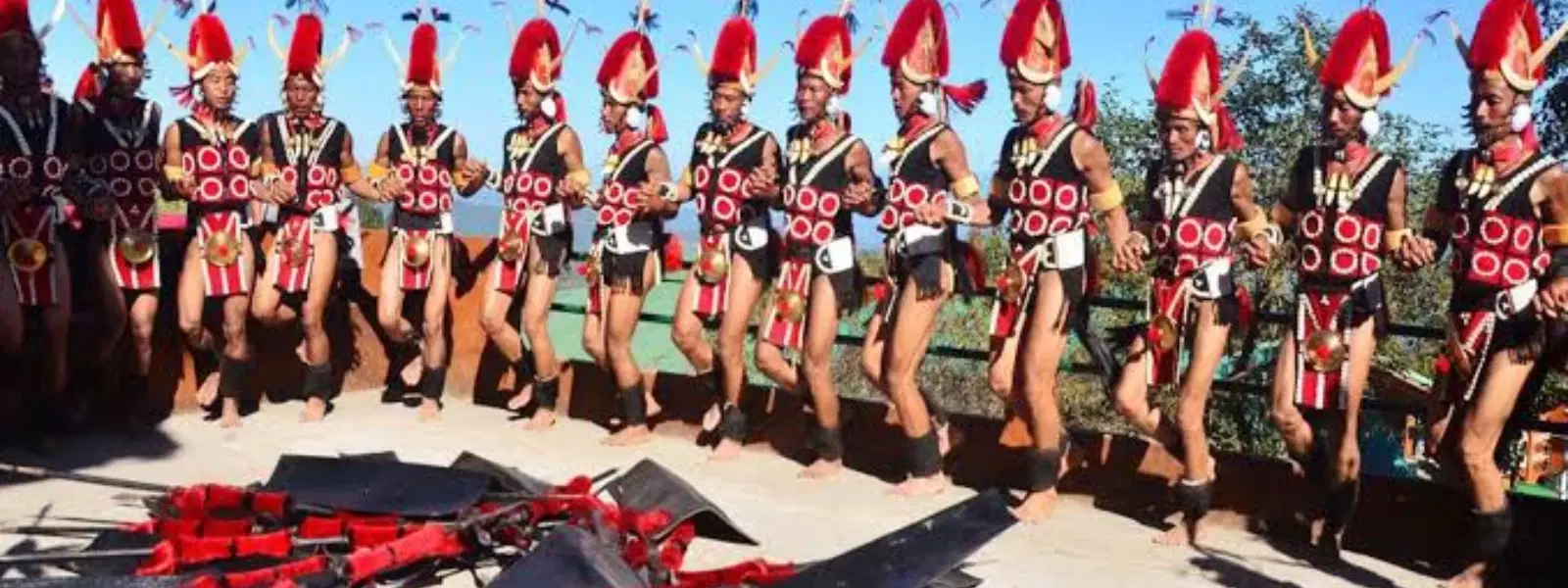
Hotels
•04 min read

Imagine a burst of color, sound, and movement under a clear Nagaland sky—a scene where indigenous tribes converge to celebrate life, heritage, and unity. The Hornbill Festival is not just an event but a vibrant tapestry of Nagaland's tribal traditions and cultural events. As you step into this grand celebration, you instantly feel the heartbeat of the 17 indigenous tribes coming together through age-old customs, folk dances, traditional crafts, and soulful music.
Established by the Nagaland Government in 2000, the Hornbill Festival was conceived as a platform to promote inter-tribal unity and preserve the deep-rooted cultural heritage of the region. Named after the revered Hornbill bird—a symbol of respect and importance in Naga culture—the festival provides a creative and spirited means to celebrate community and tradition. The bird itself represents strength, wisdom, and a free-spirited nature, echoing the essence of Nagaland's indigenous tribes.
At the core of the Hornbill Festival lies the celebration of Nagaland's 17 recognized indigenous tribes. Each tribe contributes a unique flavor through its customs, dances, and clothing, revealing a diverse mosaic of cultural heritage. This festival teaches us about the rich and varied legacies of the tribes, showcasing ancient rituals and modern expressions coexisting in harmony. It is a rare chance to experience firsthand the indigenous tribes of Nagaland in all their splendor.
The festival is renowned for its mesmerizing folk dances and indigenous music. Traditional war dances that once prepared warriors for battle now echo passion and history, while storytelling through rhythm and melody brings ancestral tales to life. Performers clad in traditional attire move gracefully to the beats of ancient drums and soft tunes of indigenous instruments, creating an ambiance that celebrates historical depth and cultural transmission.
Amid the lively pace of the festival, visitors can wander through exhibitions displaying exquisite traditional crafts of Nagaland. Intricate weaving, detailed pottery, and masterful wood carving are not merely art forms but living narratives of the tribes' identities. These crafted treasures reveal the painstaking effort and creative genius of local artisans, each piece steeped in cultural significance and history.
Beyond arts and crafts, the Hornbill Festival invites you to witness indigenous games and sports that echo the old-world charm of tribal life. Wrestling matches and archery contests, steeped in tradition, highlight the valor and agility of young participants. These competitive yet friendly games underscore the importance of physical prowess and community spirit in Naga culture.

A major attraction at the festival is the vast array of culinary delights that punctuate the celebration. Food stalls exude enticing aromas of smoked pork, bamboo shoot dishes, and the uniquely refreshing taste of traditional rice beer. Culinary competitions add a competitive zest, inviting both locals and visitors alike to sample and savor the best of Naga cuisine, which offers a flavorful insight into the regional lifestyle.
The artistic spirit of Nagaland gleams in every corner of the festival. Besides the traditional performances, exhibitions of indigenous art, including paintings and sculptures, offer perspectives on the contemporary expressions of tribal culture. A modern twist is evident in the Hornbill International Rock Festival, where music enthusiasts can enjoy a fusion of traditional beats with contemporary rock—a testament to the dynamic evolution of Nagaland's artistic legacy.
The Hornbill Festival has emerged as a key driver of tourism in Nagaland, drawing visitors from across India and even international travelers. The festival is a gateway for those curious about Nagaland tribal heritage. Its popularity not only broadens cultural understanding but also presents India as a destination where indigenous traditions and modern experiences blend seamlessly.
Local artisans and craftsmen find in the Hornbill Festival a lucrative platform to showcase their work. The event connects traditional craftsmanship with modern markets, giving artisans opportunities to earn a livelihood while preserving age-old art forms. This convergence of culture and commerce assists in boosting the regional economy and elevates the profile of indigenous talents.
In sustaining its growth, the Hornbill Festival navigates a delicate balance between honoring tradition and embracing modernity. Efforts to promote sustainability include community-based initiatives that ensure the conservation of cultural heritage for future generations. As the festival evolves, it continues to inspire conversations about cultural preservation, economic opportunity, and the importance of maintaining a sustainable legacy.

"Did you know? The Hornbill Festival is often called the 'Festival of Festivals' because it brings together all of Nagaland’s tribes in a single celebration, fostering inter-tribal unity and cultural exchange."
The Hornbill Festival celebrates all 17 recognized indigenous tribes of Nagaland, each showcasing their unique traditions, dances, and crafts.
Nagaland is home to 17 officially recognized indigenous tribes, each with distinct cultural practices and languages.
The Hornbill Festival was initiated by the Nagaland Government in 2000 to promote the state’s rich cultural heritage and foster unity among its tribes.
Apart from the Hornbill Festival, tribes in Nagaland celebrate various festivals such as Moatsu, Sekrenyi, and Aoling, each reflecting their unique traditions and agricultural cycles.
The festival is celebrated to preserve and promote Nagaland’s tribal heritage, foster inter-tribal unity, and attract tourism to the state.
The Hornbill Festival is more than just a cultural event; it is a vibrant celebration of Nagaland’s tribal heritage, traditions, and unity. From the stirring folk dances and indigenous crafts to culinary delights and artistic expressions, this festival offers an immersive experience into the lives of Nagaland's indigenous tribes. Whether you're a wanderer seeking adventure, a planner mapping out a family trip, a professional exploring cultural itineraries, or a luxury seeker looking for exclusive experiences, the Hornbill Festival promises a sensory journey that transcends ordinary travel experiences.